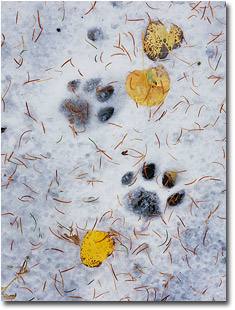Landscape Artistry
Ten Tips for Becoming a Better Landscape ArtistText and photography copyright Guy Tal
 8. Pay Attention to Detail
8. Pay Attention to Detail
Someone once said “the devil is in the details.” This certainly applies to landscape photography. Who among us doesn’t know the feeling of getting a much-anticipated image back from the lab only to realize that the tripod leg is peeking in, or that a slight shift to the side would have kept a rogue branch from overlapping with your subject? These are things that are often easy to miss, especially when using wide lenses and composing on a small viewfinder. In a print or under a loupe, these little things can become big distractions. One of the greatest allies a landscape photographer has is time. In most situations your subjects are going nowhere fast. This allows for a meticulous examination and scrutiny of every part of the image. Close down the aperture to discover out-of-focus elements, shade the lens to verify there is no flare, and take a close look around the edges of your frame to make sure no rogue elements are peeking in. Then, examine the elements in your image looking for converging elements; verify that elements are evenly distributed where they need to be and that there are no “dead areas” in the frame. Pay close attention to any loose elements such as leaves or small branches that might sway in the breeze and create a distracting effect.
Working in a forest is not easy. Perhaps the biggest challenge is finding order in an environment consisting of a large number of elements where a random shot will most likely be cluttered. I had to work my way around these trunks several times before I settled on an angle of view where the trunks are evenly distributed and do not converge, and where branches and other foliage is not prominent enough to distract from the overall mood of a misty redwood forest.
Previous Page Next Page

| 


